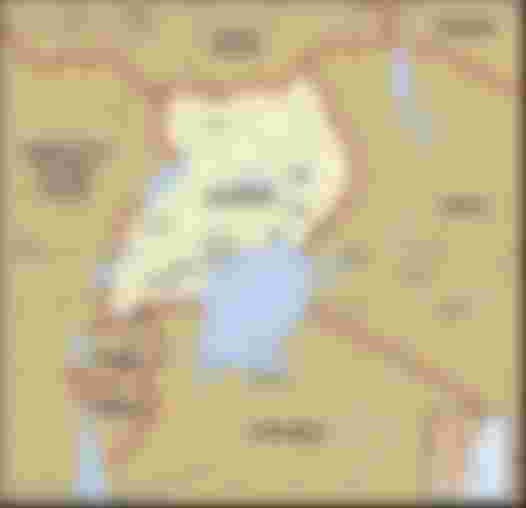Uganda, country in east-central Africa. About the size of Great Britain, Uganda is populated by dozens of ethnic groups. The English language and Christianity help unite these diverse peoples, who come together inthe cosmopolitan capital of Kampala, a verdant city whose plan includes dozens of small parks and public gardens and a scenic promenade along the shore of Lake Victoria, Africa’s largest freshwater lake. The Swahili language unites the country with its East African neighbours Kenya and Tanzania.
Jamhuri ya Uganda (Swahili); Republic of Uganda (English)FORM OF GOVERNMENTmultiparty republic with one legislative house (Parliament [4651])HEAD OF STATE AND GOVERNMENTPresident: Yoweri Museveni, assisted by Prime Minister: Ruhakana RugundaCAPITALKampalaOFFICIAL LANGUAGESEnglish; SwahiliOFFICIAL RELIGIONnoneMONETARY UNITUgandan shilling (UGX)POPULATION(2019 est.) 40,367,000POPULATION RANK(2019) 35POPULATION PROJECTION 203055,723,000TOTAL AREA (SQ MI)93,263TOTAL AREA (SQ KM)241,551DENSITY: PERSONS PER SQ MI(2018) 509.8DENSITY: PERSONS PER SQ KM(2018) 196.8URBAN-RURAL POPULATIONUrban: (2018) 23.8%Rural: (2018) 76.2%LIFE EXPECTANCY AT BIRTHMale: (2017) 54.4 yearsFemale: (2017) 57.3 yearsLITERACY: PERCENTAGE OF POPULATION AGE 15 AND OVER LITERATEMale: (2017–2018) 77.5%Female: (2017–2018) 69.9%GNI (U.S.$ ’000,000)(2017) 25,645GNI PER CAPITA (U.S.$)(2017) 600
1There are 422 members directly elected, 25 indirectly elected, and 18 others. Excludes ex officio members appointed by the president; ex officio members do not have any voting rights.
“Uganda is a fairy-tale. You climb up a railway instead of a beanstalk, and at the end there is a wonderful new world,” wrote Sir Winston Churchill, who visited the country during its years under British rule and who called it “the pearl of Africa.” Indeed, Uganda embraces many ecosystems, from the tall volcanic mountains of the eastern and western frontiers to the densely forested swamps of the Albert Nile River and the rainforests of the country’s central plateau. The land is richly fertile, and Ugandan coffee has become both a mainstay of the agricultural economy and a favourite of connoisseurs around the world.
Uganda obtained formal independence on October 9, 1962. Its borders, drawn in an artificial and arbitrary manner in the late 19th century, encompassed two essentially different types of societies: the relatively centralized Bantu kingdoms of the south and the more decentralized Nilotic and Sudanic peoples to the north. The country’s sad record of political conflict, coupled with environmental problems and the ravages of a countrywide AIDS epidemic, hindered progress and growth for many years. Yet, even so, at the beginning of the 21st century a popularly elected civilian government ruled Uganda, which had attained political stability, had set an example for tackling the AIDS crisis that threatened to overwhelm the continent, and enjoyed one of the fastest-growing economies in Africa.
There are 422 members directly elected.

Land
Uganda is bordered by South Sudan to the north, Kenya to the east, Tanzania and Rwanda to the south, and the Democratic Republic of the Congo to the west. The capital city, Kampala, is built around seven hills not far from the shores of Lake Victoria, which forms part of the frontier with Kenya and Tanza.
Relief
Most of Uganda is situated on a plateau, a large expanse that drops gently from about 5,000 feet (1,500 metres) in the south to approximately 3,000 feet (900 metres) in the north. The limits of Uganda’s plateau region are marked by mountains and valleys.
The tropical climate of Uganda is modified by elevation and, locally, by the presence of the lakes. The major air currents are northeasterly and southwesterly. Because of Uganda’s equatorial location, there is little variation in the sun’s declination at midday, and the length of daylight is nearly always 12 hours. All of these factors, combined with a fairly constant cloud cover, ensure an equable climate throughout the year.
Most parts of Uganda receive adequate precipitation; annual amounts range from less than 20 inches (500 mm) in the northeast to a high of 80 inches (2,000 mm) in the Sese Islands of Lake Victoria. In the south, two wet seasons (April to May and October to November) are separated by dry periods, although the occasional tropical thunderstorm still occurs. In the north, a wet season occurs between April and October, followed by a dry season that lasts from November to March.
Uganda is very natural beautiful place in the world.

Really vary intresting article dear 🙄🥺